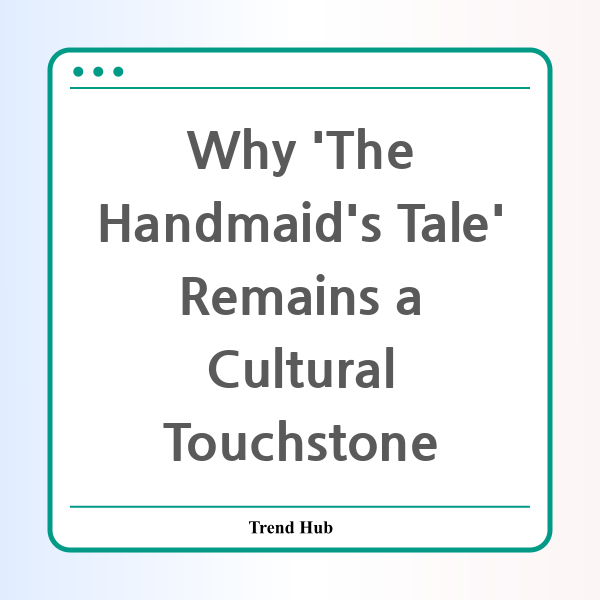* This website participates in the Amazon Affiliate Program and earns from qualifying purchases.

As we gear up for the final season of "The Handmaid's Tale," it’s hard not to reflect on the incredible journey that this dystopian series has taken us on. Premiering in April 2017, the show has become a cultural phenomenon, striking a chord with audiences by blending elements of fiction with harsh realities of today’s world. As we prepare for the show’s climax, let's explore its relevance, themes, and the visceral impact it has had on society.
The story is set in a dystopian future where women are stripped of their rights and forced into oppressive roles within a theocratic regime. This horrific depiction resonates on multiple levels, especially given the political landscape over the years. The timing of the show’s debut coincided with rising concerns over women's rights, making it feel eerily prophetic. This narrative has led many viewers to don the iconic red robes and white bonnets as symbols of protest and solidarity in real-life demonstrations across the nation.
As the final season unfolds, characters like June Osborne, portrayed by Elisabeth Moss, continue to showcase the resilience of women in the face of adversity. The emotional weight of their stories is palpable, with each season reflecting real-world struggles for reproductive rights and personal freedoms. The show confronts fundamental questions about autonomy and the lengths individuals should go to reclaim their rights.
The cast and crew have expressed a profound connection with their roles, stating that the political climate influences their performances. As the narrative shifts towards a glimmer of hope amidst chaos, it’s essential to recognize the evolution of the characters. Moss has noted that motherhood and resilience play pivotal roles in this final chapter, transforming the narrative from mere survival to a powerful message of defiance and empowerment.
In its final season, "The Handmaid's Tale" strides toward a resolution that aims to uplift rather than merely depict despair. The series suggests that while the backdrop may seem insurmountably dark, it’s the unity and strength of women that will ultimately dismantle the oppressive regimes depicted in Gilead. As Moss poignantly states, "For years, we’ve been afraid of them. Now it’s time for them to be afraid of us." This shift in narrative tone speaks volumes about resilience and collective action.
Moreover, the show's creators and actors have emphasized the importance of community and collaboration in crafting a story that resonates deeply with audiences. The behind-the-scenes dynamics are just as inspiring as the story itself, showcasing a team committed to storytelling that reflects contemporary issues while engaging in creative expression. Such dedication is evident in the detailed world-building and character development that have made this series a touchstone of modern television.
As we prepare to say goodbye to this critical piece of art, it’s crucial to reflect on how "The Handmaid's Tale" mirrors societal fears and aspirations. It challenges viewers to confront uncomfortable realities while igniting a dialogue about the importance of advocacy and social justice. The series is not just a mirror reflecting our darkest fears but also a beacon of hope and resistance.
In the end, the legacy of "The Handmaid's Tale" extends beyond its air time; it’s a cultural commentary that will resonate in the hearts and minds of its audience for generations to come. With its significant themes of empowerment, resistance, and the fight for rights, the show's relevance will only heighten as we witness the unfolding of its final chapters.
* This website participates in the Amazon Affiliate Program and earns from qualifying purchases.